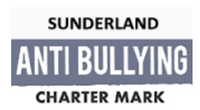Non Core Curriculum
Curriculum Intent Statement
Basic Principles
- Learning is a change to long-term memory.
- At Gillas Lane Primary Academy, we aim to ensure that our children experience a wide breadth of study and have, by the end of each key stage, long-term memory of an ambitious body of procedural and semantic knowledge.
Curriculum Drivers
Curriculum drivers shape our curriculum breadth. They are derived from an understanding of the backgrounds of the Gillas Lane families, our shared beliefs about high quality education and our values. They are used to ensure we give our children appropriate and ambitious curriculum opportunities.
The Gillas Lane curriculum drivers are:
- Rich vocabulary
- Mental health and wellbeing
- Raising aspirations
Cultural Capital
Cultural capital gives our children the vital background knowledge required to be informed and thoughtful members of our community who understand and believe in British Values. Assemblies are used as a consistent, scheduled way to expose our children to British Values in a meaningful context. Working alongside the Sir Tom Cowie Charitable Trust allows us to ensure fully inclusive exposure to the arts and other cultural experiences for all of the Gillas Lane children.
Curriculum Breadth
Curriculum breadth is shaped by our curriculum drivers, cultural capital, subject topics and our ambition for the Gillas Lane children to study the best of what has been thought and said by many generations of academics and scholars.








